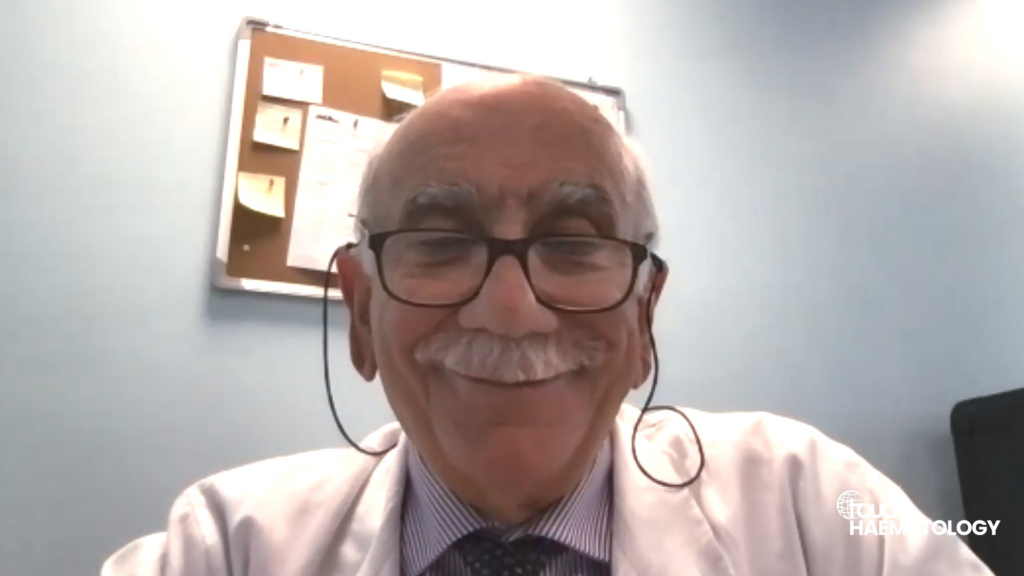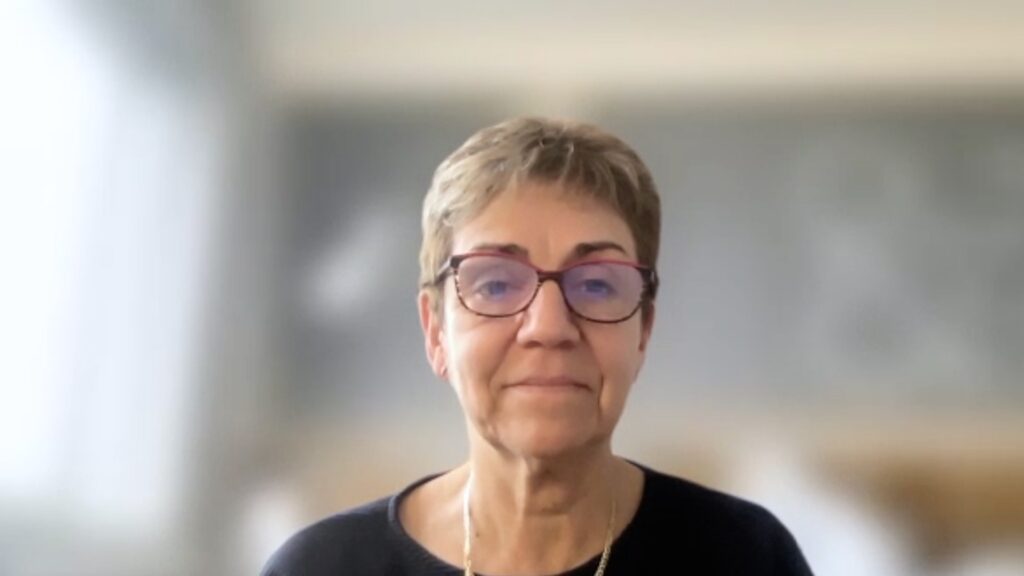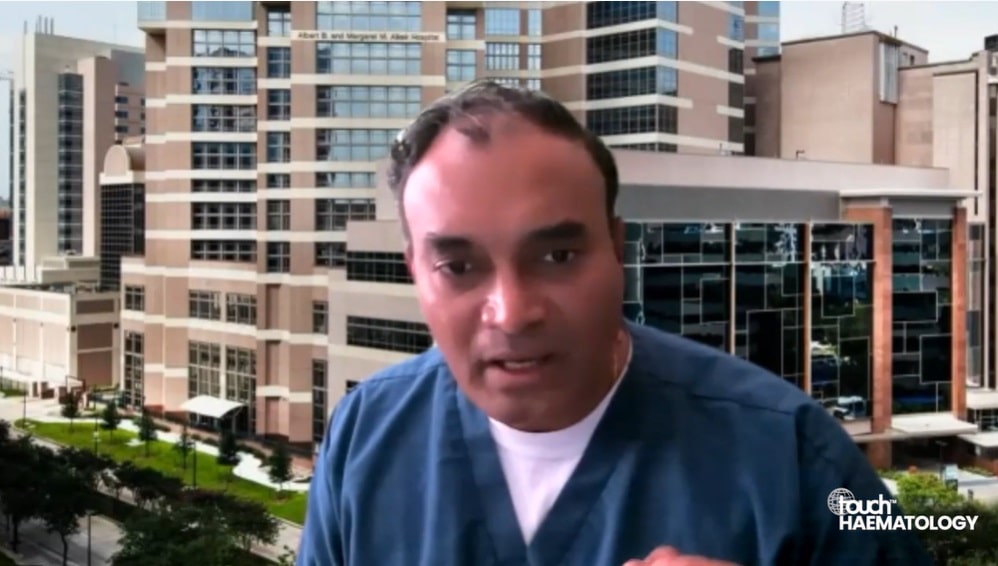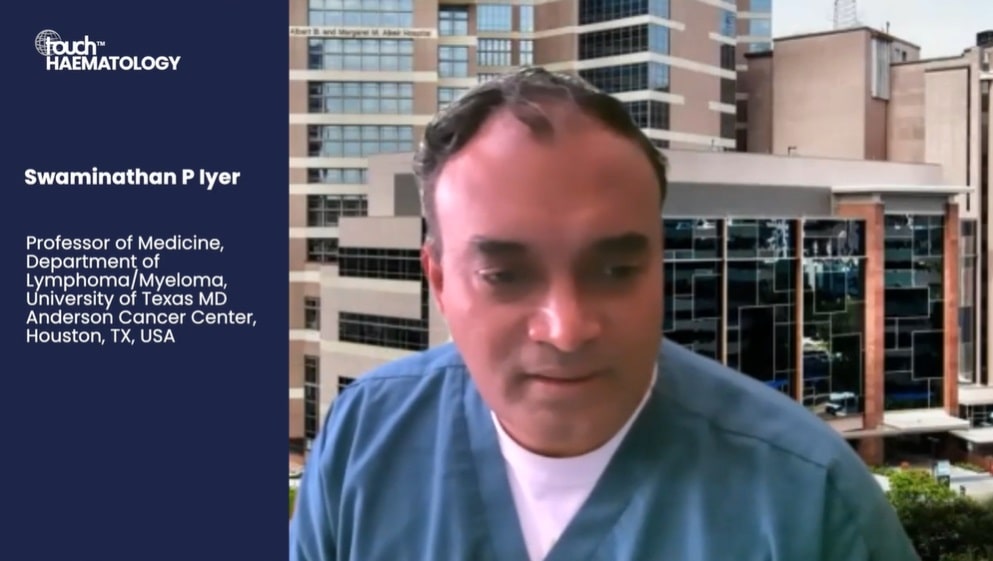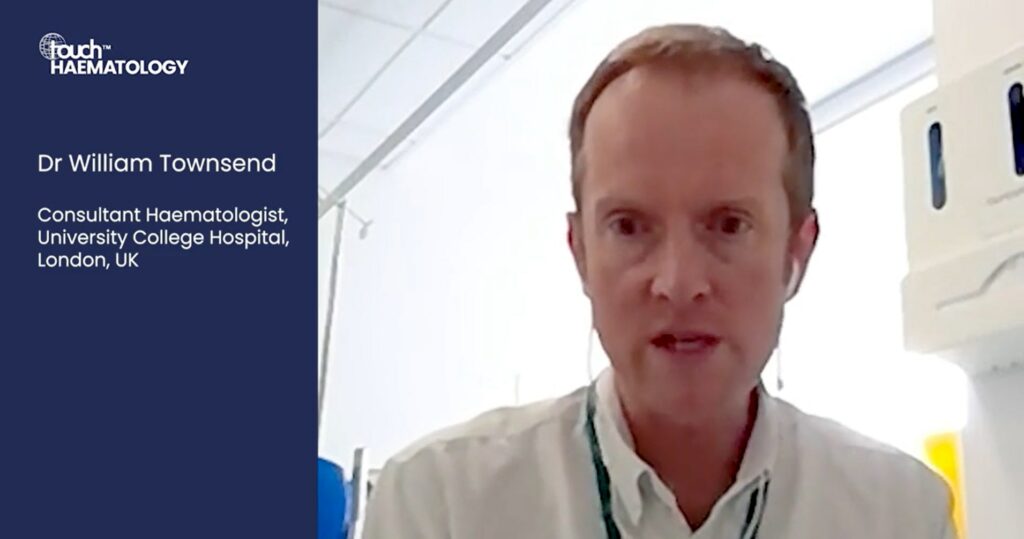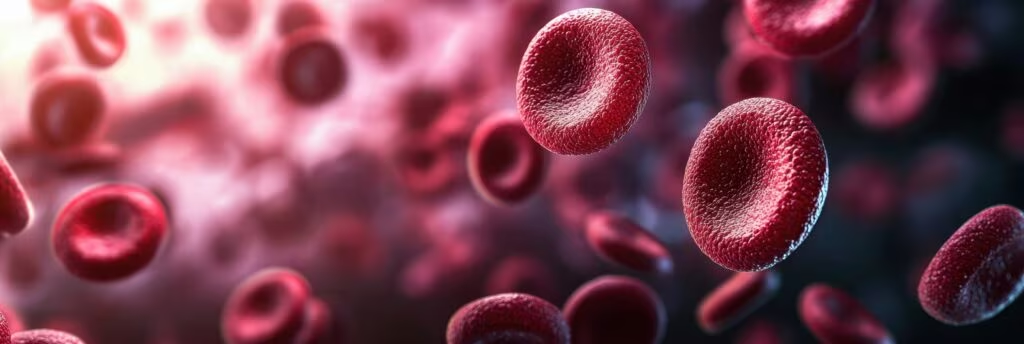
The American Society of Hematology (ASH) held its 66th Annual Meeting from 7–10 December 2024. Among the highlights of the meeting were six late-breaking abstracts that have the potential to influence how healthcare professionals approach a range of condition,s from introducing new or altering current practice. These include disorders such as lymphoma, sickle cell anaemia and myeloproliferative neoplasms, offering new insights and potential breakthroughs in treatment strategies.
LBA-1: Tafasitamab Combination Improves Outcomes in Relapsed/Refractory Follicular Lymphoma
Dr. Laurie H. Sehn (BC Cancer Centre, University of British Columbia, BC, Canada) presented the results of the phase III inMIND trial (NCT04680052), showing that adding tafasitamab (tafa) to lenalidomide (len) and rituximab (R) improves progression-free survival (PFS) in relapsed/refractory (R/R) follicular lymphoma (FL). Among 548 randomised patients, tafa+len+R reduced the risk of disease progression, relapse, or death by 57%, with median PFS of 22.4 vs 13.9 months (HR 0.43; P<0.0001). Independent review confirmed the PFS benefit. Tafa also improved overall response rates (83.5% vs 72.4%) and duration of response (21.2 vs 13.6 months). The safety profile was manageable, with similar grade 3/4 adverse event rates. As the first validated anti-CD19 + anti-CD20 combination in FL, tafa+len+R may become a new standard of care.
LBA-2: Hepatic-like Erythropoietin Polycythemia: A New Entity of Secondary Erythrocytosis
Dr. Betty Gardie (Ecole Pratique des Hautes Etudes, EPHE, Université de Nantes, CNRS, INSERM, Nantes, France) presented a study identifying Hepatic-like Erythropoietin Polycythemia (HEP) as a novel form of secondary erythrocytosis linked to mutations in the EPO gene. Unlike typical hereditary or acquired erythrocytosis, which result from hypoxia or excessive EPO production, HEP involves mutations in the EPO promoter and intron 1, leading to liver-like EPO with unique glycosylation patterns.
Next-generation sequencing of six unrelated families revealed three novel mutations. Further studies confirmed these mutations increased EPO gene responsiveness to HIF-2α. The circulating EPO displayed a unique isoelectric focusing (IEF) profile, similar to that found in premature neonates, with reduced sialic acids linked to enhanced EPO receptor signalling, suggesting a gain-of-function effect. HEP highlights the need for both qualitative and quantitative EPO testing in diagnosing idiopathic and hereditary erythrocytosis.
LBA-3: RENOVE Trial: Reduced-Dose Versus Full-Dose Direct Oral Anticoagulants for Extended Treatment of Venous Thromboembolism
Dr. Francis Couturaud (Brest University, Respiratory Medicine at Brest University Hospital Centre, Brest, France) presented the RENOVE trial (NCT03285438), which assessed the noninferiority of reduced-dose versus full-dose DOACs for preventing recurrent venous thromboembolism (VTE) in patients at high recurrence risk, after 6 to 24 months of initial treatment. The trial enrolled patients with unprovoked VTE and extended anticoagulation needs. After a 36-month follow-up, recurrent VTE rates were similar between the reduced-dose (2.2%) and full-dose (1.8%) groups. However, the reduced-dose regimen showed lower rates of clinically relevant bleeding (9.9% vs 15.2%) and composite events (11.8% vs 16.5%). These findings suggest that while reduced-dose DOACs may offer a safer option with a lower bleeding risk, they do not provide superior protection against recurrent VTE compared to full-dose anticoagulation.
LBA-4: NFKB1 rs230511 Haplotype Modulates Inflammatory and Prothrombotic Pathways in PV and ET
In a study presented by Dr. Jihyun Song (Division of Hematology and Hematologic Malignancies, Huntsman Cancer Institute, University of Utah, Salt Lake City, Utah), the team investigated the role of the NFKB1 rs230511 haplotype in modulating inflammation and thrombosis in polycythaemia vera (PV) and essential thrombocythemia (ET). They identified three novel alternatively spliced NFKB1 transcripts (AS-NFKB1), linked to the activation of the NF-κB pathway, hypoxia-inducible factor (HIF) transcription, and prothrombotic gene expression.
The study found that individuals with the C/T genotype of NFKB1 rs230511 had lower levels of inflammatory markers and reduced HIF-target gene expression, suggesting a protective role against inflammation and thrombosis in PV and ET. Additionally, patients with the C/T genotype were more likely to achieve a complete haematological response to ropeginterferon alfa-2b (Ropeg), suggesting the NFKB1 variant could be a potential biomarker for therapy efficacy. These insights highlight the potential of targeting NFKB1-related pathways in PV and ET therapies, as well as the importance of understanding the genetic factors that influence inflammation, thrombosis and treatment outcomes.
LBA-5: Long-Term Benefits of Allogeneic Stem Cell Transplantation in Sickle Cell Anaemia: Insights from the DREPAGREFFE-1 and -2 Trials
Dr. Françoise Bernaudin (Referral Centre for Sickle Cell Disease/Clinical Research Department, Hôpital Intercommunal de Créteil, Université Paris-Est, Créteil, France), presented results from the DREPAGREFFE-1 and DREPAGREFFE-2 trials, which examined the long-term outcomes of allogeneic stem cell transplantation (alloSCT) versus standard-of-care (SoC) in children with sickle cell anaemia (SCA), focusing on silent cerebral infarcts (SCI), cognitive function, and quality of life (QoL).
The DREPAGREFFE-1 trial (NCT01340404) enrolled 67 children, with 32 receiving alloSCT and 35 on SoC with chronic transfusions (CT) and hydroxyurea (HU). After 1 year, the alloSCT group showed significantly lower cerebral arterial velocities (TAMMV) compared to SoC (difference -40.8 cm/s; P<0.001). By 3 years, more patients in the alloSCT group had normalised TAMMVs, and QoL was notably better, especially in physical and school functioning.
Cognitive testing revealed improvements in working memory and processing speed indices, with better physical, school, and social functioning on the Pediatric Quality of Life Inventory (PedsQL™) in the alloSCT group. The follow-up DREPAGREFFE-2 trial (NCT05053932), assessing these patients at 10 years, confirmed the sustained benefits of alloSCT in preventing neurological complications and improving cognitive and physical outcomes.
LBA-6: EA4151 Trial Questions Role of Autologous Transplant in First Remission of MCL
At ASH, Dr. Timothy S. Fenske (Medical College of Wisconsin), presented EA4151 trial results showing that autologous stem cell transplantation (auto-HCT) may not improve outcomes in mantle cell lymphoma (MCL) patients achieving minimal residual disease (MRD)-negative first remission. The study enrolled 650 patients (aged 18–70) in first complete remission (CR) post-induction. Those with undetectable MRD (uMRD6) were randomised to auto-HCT plus three years of maintenance rituximab (MR) or MR alone, while MRD-positive/indeterminate CR patients received auto-HCT plus MR. Among 516 randomised patients, overall survival (OS) and progression-free survival (PFS) at three years were similar between the auto-HCT and MR arms (OS: 82.1% vs 82.7%; PFS: 76.6% vs 77.4%). However, MRD-positive patients who converted to uMRD6 post-transplant had improved outcomes (100% three-year OS/PFS), whereas persistent MRD positivity post-transplant was linked to poorer survival. Findings suggest auto-HCT offers no added benefit in deeply remissive uMRD6 patients but may still be valuable for those with residual disease. Longer follow-up is needed.
Disclosure: This article was created independently by the touchHAEMATOLOGY team utilizing AI as an editorial tool (ChatGPT (GPT-4o) [Large language model]. https://chat.openai.com/chat.) The content was developed and edited by human editors. No funding was received in the publication of this article. It is not affiliated with the American Society of Hematology (ASH).
Acknowledgement: Editorial Assistance was provided by Joey Heywood at Touch Medical Media.
SIGN UP to touchHAEMATOLOGY!
Join our global community today for access to thousands of peer-reviewed articles, expert insights, and learn-on-the-go education across 150+ specialties, plus concise email updates and newsletters so you never miss out.
Click here to REGISTER NOW >>>


